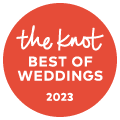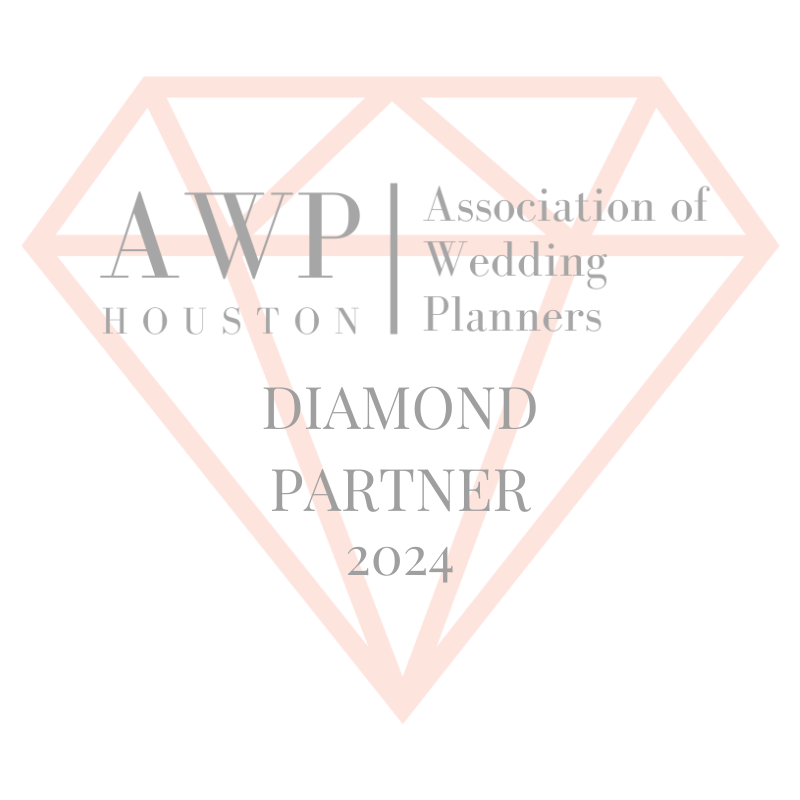
Can I add drone footage to my wedding film package?
Yes! Half of our packages already include aerial cinematography but you can always add drone footage to your package up until your final balance is due!
Who is responsible for capturing drone footage?
The lead cinematographer will be the one responsible for flying the drone on your wedding day!
What is included with drone footage?
This is a great question! There are a ton of variables that play into what we can and can’t capture with aerial cinematography on your wedding day. Factors such as FAA regulations, weather, types of airspaces, how much time we have allocated to capture drone footage within your wedding film timeline, etc. will determine what we capture footage of, for how long we can fly, and if it’s even feasible for us to do so. Aerial cinematography is typically used to provide breathing room in the highlight film, establish a scene, and overall provides another perspective to your wedding day. We typically capture drone shots of your wedding venue, ceremony, and reception location. The shots will generally be wide and moving so that we can show your venue/location and how it fits within the surrounding landscape.
Will you get drone footage during our wedding ceremony?
Due to several risk factors and complexities, we have ultimately decided not to have our lead cinematographers capture drone footage of outside ceremonies.
Can you fly the drone indoors?
Unfortunately, we do not permit aerial cinematography indoors.
Can you fly the drone at nighttime?
FAA rules have recently changed to where our operators are now allowed to fly drones at night time if they have the correct anti-collision lighting. We rarely capture aerial cinematography at night for weddings largely due to the amount of light that is available for the camera sensor and limited visibility of the operator. Because our cameras on-ground have more complex sensors, larger bit rates, and computing measures, they are able to interpret low lighting environments better than drones can. Simply meaning, if we are able to capture drone footage at night time, the footage may appear a little softer, noisier, and of lower quality simply due to camera/technology constraints.
Can you fly the drone during cocktail hour?
Yes! As long as time permits in your wedding film timeline, it’s an outdoor cocktail hour, and we stay a safe distance away from guests in case a malfunction occurs.
Can you fly the drone during a fireworks show?
Unfortunately, no. There is way too much risk overall.
If I have multiple locations, will you be able to fly the drone at all of those locations?
We will do our best to capture drone footage of all locations but this really depends on FAA regulations, if we have time in the wedding film timeline, and weather permitting.
How low and high will you be able to fly a drone on my wedding day?
As operators on the wedding day, we will always fly within line of sight for liability and safety purposes. Line of sight is typically within a 400ft height limit and in regards to how low we can fly, we can hover roughly a foot or more above the ground surface for a different perspective.
Is flying drones loud and disruptive?
They can be. Some more advanced drones come with propellers that are designed to combat and move more silently against the wind, while others struggle doing so. This is one reason and contributing factor as to why we choose not to fly drones during an outside wedding ceremony and some cocktail hour events. The noise can be distracting to guests and draw attention to a drone rather than you on your big day.
How do I know if my venue allows aerial cinematography or not?
There are a few applications you can download on your phone to check if your venue, ceremony, or reception location permits drones to fly. Our team uses a FAA regulated app called B4UFLY that is found here: https://www.faa.gov/uas/recreational_fliers/where_can_i_fly/b4ufly/. If you choose not to use the app or it’s too complicated, you can always reach out to one of our sales representatives or wedding coordinators and they will happily check for you.
How long does it take to get drone footage of a location?
Drone footage of a specific location shouldn’t take too long to have enough clips that can be used in the highlight film. On average, I would recommend 15-20 minutes per location for the operator to get set up, validate credentials before takeoff (if needed), capture drone footage, and then land to pack up. Of course, this estimate varies depending on each lead cinematographer, what their vision is for the footage and film, the weather, wind speed, and how much of an area they need to cover.
What happens if I purchased aerial cinematography but for some reason, the team wasn’t able to capture footage on my wedding day?
This happens quite often due to weather not cooperating, the timeline falling behind and becoming way too tight for us to squeeze in drone footage, or for other reasons. We have a few options when overcoming this instance. The first is that we will do our very best to capture drone footage on your wedding day if a window allows (break in the weather). If this is impossible due to time or not having a break in the weather, we typically send another lead cinematographer within a few days after the wedding day, to go back and capture drone footage that can be used in your wedding films. Before doing so, we will look at the raw footage taken on your wedding day and then pick a day to reshoot drone footage based on the weather forecast so that the scenery and lighting matches.
The other option is to hop on a call (after your wonderful honeymoon of course) with one of our wedding film coordinators to discuss other solutions that you would feel comfortable with as well as our team.
What is the FAA and what do they do?
FAA stands for the Federal Aviation Administration. This administration is part of the U.S. Department of Transportation and is responsible for the safety of civil aviation. They are the ones responsible for determining which airspaces are controlled and what protective measures are put in place, how high drones are enabled to fly in regards to other aircraft, how close we can fly to buildings, civilians, etc.
What do you mean by weather permitting?
Weather permitting can mean a lot of different things. Our ultimate goal when utilizing aircraft is safety before and during operation. Because drones are small and unmanned, one may think that it’s fine to fly it in any type of weather; this is false.
-
- High Wind: Every drone has a safe operation specification listed for operating at specific wind speeds. Most cinematic drones that we use to film weddings can safely operate between 20-30 mph. Having said that, if wind is above the specification listed for that drone, we could run into serious problems not only with the footage looking shaky and unstable, but also the servos and/or motors burning up while trying to combat the wind velocity. Because we care for our couples and their families, we have tried to fly during times of high wind gusts and ultimately lost drones due to malfunction or calibration error.
- Fog: This can be tricky as fog doesn’t appear to be dangerous on ground level, but in the air it offers limited visibility and contains moisture that could hinder safe operation. The primary concern is how the drone handles as well as how the camera performs. Because of the moisture and appearance of fog, the shots taken may appear hazy, soft, out of focus, or just poor quality. Due to this, we try to avoid flying during foggy conditions as much as possible.
- Rain, Sleet, and Snow: We do not fly drones during any type of rain, sleet, or snow of any kind. These types of weather are unpredictable in weight, rate, speed, and longevity. Extended periods of moisture will disrupt the servos of the drone, which may cause an electrical issue to occur, ultimately crashing the drone while in operation.
Other: Any other abnormal weather condition or pattern that is not listed above, we will ultimately choose not to fly drones until a safe alternative is available to do so.







